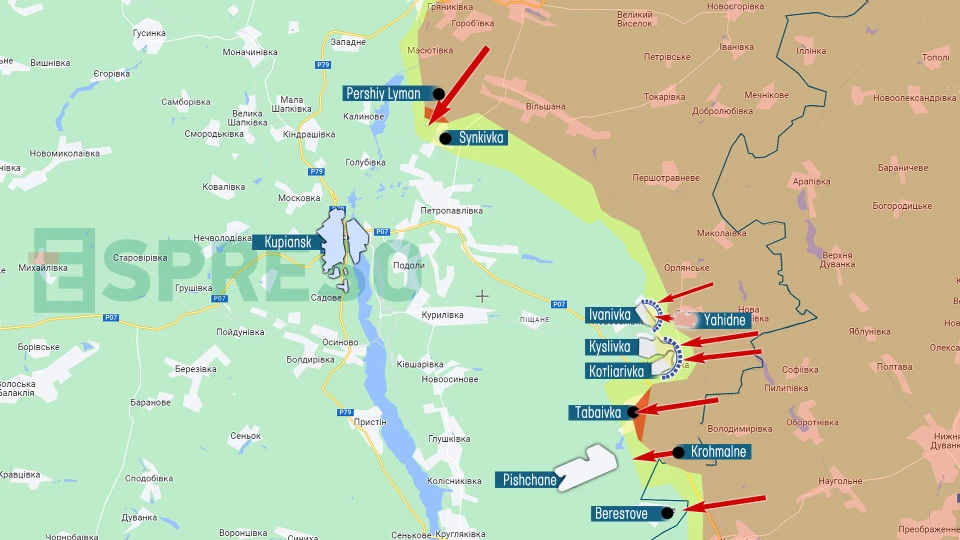
Meeting Ukraine's ammunition needs: Can EU and USA keep up with Armed Forces' artillery demand? Serhiy Zgurets’ column
The Ukrainian Ministry of Defense has sought assistance from its allies for a monthly supply of around 200,000 shells or 2.4 million annually, translating to a daily firing rate of 6.5 thousand rounds
Shells for Ukraine
Yesterday, Josep Borrell, European Union High Representative for Foreign Affairs and Security Policy, arrived in Kyiv, marking the beginning of our military column focusing on the fate of shells for Ukraine. As a reminder, European countries committed to delivering 1 million 155 mm shells, but at best, only half may reach Ukraine by March. Just before his Kyiv visit, Borrel stated that the EU's failure to meet its ammunition supply plans to Ukraine isn't due to a lack of capacity but a different issue. He mentioned, "We can produce, but an important part of our products is exported to third countries." Borrell suggested that EU countries could negotiate with their customers to redirect these products to Ukraine.
Two conclusions can be drawn from this situation. Firstly, why didn't the EU take action earlier? The lack of effective mechanisms to influence their countries' defense industry, operating privately and market-driven, has hindered rapid response. The threat of war with Russia hasn't triggered a significant overhaul of the European defense industry's workings, focused on existing contracts. Secondly, Borrell's assessment of European countries' capability to produce enough ammunition for Ukraine's actual needs may be inaccurate.
How much ammunition is needed and what can European countries produce? Last year, Ukraine used up to 7,000 rounds per day during the counteroffensive, marking the peak of their firepower. Defense Minister Umerov recently notified European partners that Ukraine faces a critical shortage of artillery shells, limiting the Armed Forces to firing no more than 2,000 shells daily — three times less than Russia.
The Ministry of Defense of Ukraine has requested around 200,000 shells per month or 2.4 million annually, aiming for a daily firing rate of 6.5 thousand rounds. However, Russia, with its domestic production and supplies from North Korea, boasts an arsenal of up to 4 million shells per year or 11,000 daily, giving them a numerical advantage.
Now, turning to ammunition manufacturing in EU countries and the USA, optimistic estimates suggest the United States will produce about 1.2 million shells by year-end. European production includes 800,000 from Rheinmetall, 100,000 from a leading French ammunition manufacturer, and approximately 80,000 from Nammo, a collaboration involving France, Sweden, the Netherlands, and Finland. In total, optimistic projections anticipate a production capacity of up to 2 - 2.5 million rounds by the end of this year.
Hence, some EU nations, especially the Baltic countries, argue for sourcing shells from non-EU countries. Potential options include acquiring projectiles from South Korea, Australia, Japan, India, and Pakistan, and considering the supply of cluster munitions from the USA. All of these alternatives are feasible.
I am hopeful that these measures will be implemented to minimize the adversary's advantage on the battlefield. Currently, our artillery units are adapting their combat tactics and using shells judiciously. There are instances where they have to overlook Russian attacks in small groups employed by the enemy, impacting the overall course of operations. At present, we are compelled to prioritize the use of FPV drones, which can only partially compensate for the lack of fully equipped artillery.
Frontline situation in Kupyansk direction
Now, let's delve into a detailed analysis of specific areas on the front. In the last 24 hours, there were 126 intense combat clashes, marking the highest count since October of the previous year when Russia initiated regular offensive operations across various front sectors. Currently, there are several focal points of high activity, including Avdiivka, Marinka, and the Lyman-Kupyansk direction.
Lieutenant Colonel Ivan Shevtsov, the spokesperson for the "Steel Border" assault brigade situated in the Lyman-Kupyansk direction, reported that the situation remains tense. The enemy persists in launching attacks on Defense Forces positions. Speaking specifically about the Kupyansk direction, Synkivka stands out as the most intense spot. During the past day, on February 5, the enemy attempted eight offensives in Synkivka, but all were successfully repelled. Recently, invaders also tried to circumvent Synkivka by approaching from Ivanivka, but they encountered losses in that direction as well.

The officer observed that the enemy is gathering troops and equipment, which occurs periodically due to planned rotations in the Russian army. The replenishment is necessary as the occupiers incur losses during their assaults, and providing equipment and personnel helps restore their depleted resources. For instance, on February 5 in the Lyman-Kupyansk direction, the enemy suffered significant losses with almost 300 casualties, including 279 wounded and killed. They also lost a substantial number of pieces of equipment, contradicting earlier estimates of 500-600 tanks; in the past day alone, they lost 88 pieces, including 12 tanks and 34 IFVs.
Shevtsov clarified that the extent of damaged enemy equipment corresponds to the number of attacks initiated by the enemy. With 6-8 attacks two weeks ago, the clashes have surged to 28 combat engagements in the last day. As the enemy intensifies their assaults, they utilize more equipment, providing Ukrainian defenders with increased opportunities to target Russian tanks and infantry fighting vehicles. Despite unfavorable weather conditions, the invader maintains a consistent tactic of conducting assault actions, employing heavy equipment when conditions permit.
Shevtsov provided information about Krokhmalne, stating that the Defense Forces moved back 200-300 meters to safeguard fighters' lives and secure more advantageous firing positions. The situation there remains stable. In Tabaivka, there have been no recent enemy offensive actions, and the settlement is fully under Armed Forces control.
The lieutenant colonel emphasized the importance of fortification measures in war. Before assigning a soldier to a position, proper engineering is crucial. Consequently, fortifications in the Kupyansk direction are prioritized, as there was sufficient time to prepare solid defenses since the summer. The primary concern is the safety of Ukrainian servicemen. New positions are under development and equipped, with additional efforts focused on mining the area to prevent infiltration by sabotage and reconnaissance groups.
- News














































